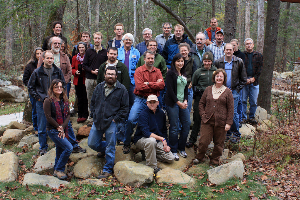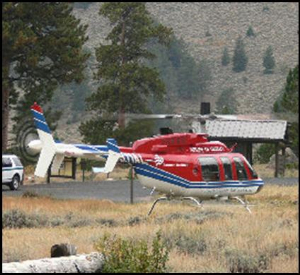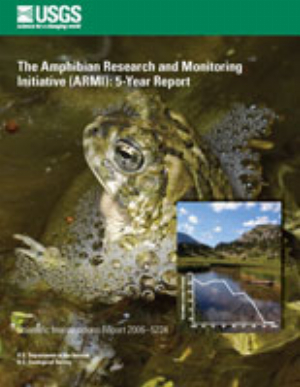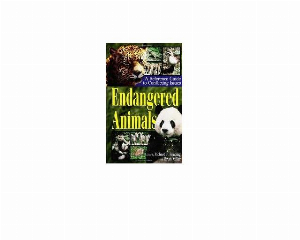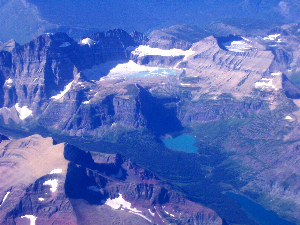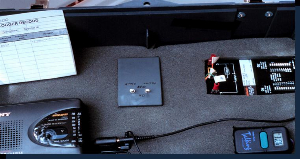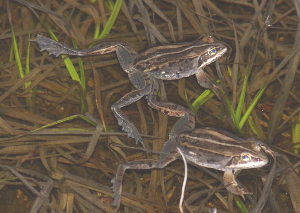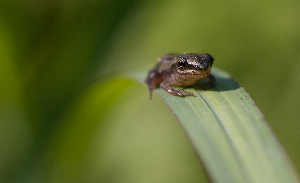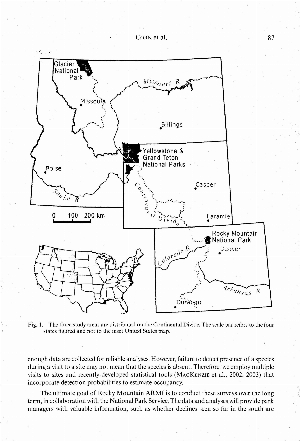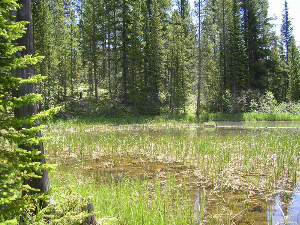Search ARMI Database
Search term(s)
Contribution Number
Search Results
180 record(s) found.
Papers & Reports Environmental limitations of an amphibian pathogen in the Rocky Mountains, U.S.A
Papers & Reports Bufo boreas Baird and Girard, 1852(b), western toad
Papers & Reports The U.S. Department of Interior’s Amphibian Research and Monitoring Initiative: a successful start to a national program
Papers & Reports Experimental repatriation of boreal toad (Bufo boreas) eggs, metamorphs, and adults in Rocky Mountain National Park
Papers & Reports The amphibian research and monitoring initiative (ARMI): 5-year report
ARMI’s approach to research and monitoring is multiscale. Detailed investigations focus on a few species at selected local sites throughout the country; monitoring addresses a larger number of species over broader areas (typically, National Parks and National Wildlife Refuges); and inventories to document species occurrence are conducted more extensively across the landscape. Where monitoring is conducted, the emphasis is on an ability to draw statistically defensible conclusions about the status of amphibians. To achieve this objective, ARMI has instituted a monitoring response variable that has nationwide applicability. At research sites, ARMI focuses on studying species/environment interactions, determining causes of observed declines, and developing new techniques to sample populations and analyze data. Results from activities at all scales are provided to scientists, land managers, and policymakers, as appropriate.
The ARMI program and the scientists involved contribute significantly to understanding amphibian declines at local, regional, national, and international levels. Within National Parks and National Wildlife Refuges, findings help land managers make decisions applicable to amphibian conservation. For example, the National Park Service (NPS) selected amphibians as a vital sign for several of their monitoring networks, and ARMI scientists provide information and assistance in developing monitoring methods for this NPS effort. At the national level, ARMI has had major exposure at a variety of meetings, including a dedicated symposium at the 2004 joint meetings of the Herpetologists’ League, the American Society of Ichthyologists and Herpetologists, and the Society for the Study of Amphibians and Reptiles. Several principal investigators have brought international exposure to ARMI through venues such as the World Congress of Herpetology in South Africa in 2005 (invited presentation by Dr. Gary Fellers), the Global Amphibian Summit, sponsored by the International Union for Conservation of Nature (IUCN) and Wildlife Conservation International, in Washington, D.C., 2005 (invited participation by Dr. P.S. Corn), and a special issue of the international herpetological journal Alytes focused on ARMI in 2004 (edited by Dr. C.K. Dodd, Jr.).
ARMI research and monitoring efforts have addressed at least 7 of the 21 Threatened and Endangered Species listed by the U.S. Fish and Wildlife Service (California red-legged frog [Rana draytonii ], Chiricahua leopard frog [R. chiricahuensis], arroyo toad [Bufo californicus], dusky gopher frog [Rana sevosa], mountain yellow-legged frog [R. muscosa], flatwoods salamander [Ambystoma cingulatum], and the golden coqui [Eleutherodactylus jasperi]), and 9 additional species of concern recognized by the IUCN. ARMI investigations have addressed time-sensitive research, such as emerging infectious diseases and effects on amphibians related to natural disasters like wildfire, hurricanes, and debris flows, and the effects of more constant, environmental change, like urban expansion, road development, and the use of pesticides.
Over the last 5 years, ARMI has partnered with an extensive list of government, academic, and private entities. These partnerships have been fruitful and have assisted ARMI in developing new field protocols and analytic tools, in using and refining emerging technologies to improve accuracy and efficiency of data handling, in conducting amphibian disease, malformation, and environmental effects research, and in implementing a network of monitoring and research sites. Accomplishments from these endeavors include more than 40 publications on amphibian status and trends, nearly 100 publications on amphibian ecology and causes of declines, and over 30 methodological publications. Several databases have emerged as a result of ARMI and its partnerships; one, a digital atlas of ranges for all U.S. amphibian species, was used by the IUCN to display amphibian distribution maps in the Global Amphibian Assessment Project.
Given the scope of ARMI and the panoply of projects, findings have had implications for policy. Investigations that demonstrate amphibian declines or illuminate causes of declines provide valuable information about habitat management, environmental effects, mechanisms for the spread of disease, and human/amphibian interfaces. This information has been made available to land managers, scientists, educators, Congress and other policymakers, and the public. The support afforded ARMI by Congress has been influential in the program’s development and success. The value of ARMI’s efforts will continue to increase as we are able to extend our studies spatially and temporally to answer critical questions with more confidence. We are using ARMI’s resources efficiently and continuing to develop innovative mechanisms for leveraging resources for maximum effectiveness during challenging financial times.
This report is a 5-year retrospective of the structure, methodology, progress, and contributions to the broader scientific community that have resulted from this national USGS program. We evaluate ARMI’s success to date, with regard to the challenges faced by the program and the strengths that have emerged. We chart objectives for the next 5 years that build on current accomplishments, highlight areas meriting further research, and direct efforts to overcome existing weaknesses.
Papers & Reports Use of oxytetracycline in batch-marking post-metamorphic boreal toads
Papers & Reports Evidence for disease-related amphibian decline in Colorado
Papers & Reports Boreal toads
Papers & Reports Hatching success in two species of amphibians in northern Colorado in relation to water chemistry and climate
Papers & Reports A radio transmitter belt for small ranid frogs
Papers & Reports Distribution limits of Batrachochytrium dendrobatidis: a case study in the Rocky Mountains, USA
Papers & Reports Health evaluation of amphibians in and near Rocky Mountain National Park (Colorado, USA)
Papers & Reports A comparison in Colorado of three methods to monitor breeding amphibians
Papers & Reports The U. S. Geological Survey’s Amphibian Research and Monitoring Initiative
Papers & Reports Variable breeding phenology affects the exposure of amphibian embryos to ultraviolet radiation: reply
Papers & Reports Variable breeding phenology affects the exposure of amphibian embryos to ultraviolet radiation
Papers & Reports Status of amphibians on the Continental Divide: surveys on a transect from Montana to Colorado, USA
Papers & Reports Factors limiting the recovery of boreal toads (Bufo b. boreas)
Papers & Reports Sensitivity to acidification of subalpine ponds and lakes in northwestern Colorado
News & Stories Native Boreal Toads Released Into Rocky Mountain National Park
Rocky Mountain National Park (RMNP) has historically been a home to boreal toads (Bufo boreas boreas). Since the 1970s the number of toad populations in Colorado and in the Park has declined. Now there are only three locations where breeding is occurring in RMNP. The USGS Fort Collins Science Center has been studying boreal toads in RMNP for over 15 years and has documented population declines coincident with the detection of the amphibian chytrid fungus.
After 4 years of surveys, disease testing, and planning specific to this effort, RMNP is collaborating with USGS and the Colorado Division of Wildlife to reintroduce boreal toads to a site on the west side of the Park. The site is typical of historical toad habitat in the park, has only a small population of chorus frogs (Pseudacris maculata), no evidence of the amphibian chytrid, and no fish. Although most of the wetland dries by the end of summer, deeper waters in the middle provide a refuge for late-developing amphibian larvae. Boreal toad tadpoles do not overwinter, and therefore must grow and metamorphose before the onset of freezing temperatures and snow, making this water refugia important.
This year over 14,000 tadpoles were released by a team of over 40 volunteers on June 25th. This exercise involved carrying plastic bags filled with water and about 300 tadpoles per bag up two miles of trail and into the site. The tadpoles were hatched at the Colorado Division of Wildlife’s Native Species Hatchery in Alamosa, Colorado. The parents of these tadpoles were wild caught boreal toads from RMNP.
This effort involved over 40 volunteers including representatives from the Park Service, U.S. Geological Survey, Bureau of Land Management, U.S. Forest Service, Colorado State University, the Colorado Division of Wildlife and non-governmental agencies.
This was Year 1 of the planned three years of tadpole releases for this site. Boreal toads, if they can survive the tadpole stage and successfully metamorphose, take three to four years to reach sexual maturity and return to their natal pond to breed. Tracking these tiny toads is extremely difficult between metamorphosis and their return to the pond. Multiple releases over several years increase the chances that some will survive and return to breed, and is patterned after a successful reintroduction of Natterjack toads in England.
In addition to the tadpoles, seven adult boreal toads, animals that were in excess of those needed for the captive breeding stock at the hatchery, were also released. These animals, four males and 3 females, were released in early summer after receiving a hormone injection to encourage breeding. Each animal was fitted with a radio transmitter and will be tracked 2 to 3 times per week over the summer until autumn when the batteries on the transmitters will be drained.
Tadpoles are generally considered the best lifestage to use for reintroduction efforts; however, releasing adults also can be advantageous. Released adults can act as “sentinels” to detect disease, particularly the amphibian chytrid fungus. Although the site was tested using non-invasive swabs from captured chorus frogs as well as a newer technique to test the water for this fungus, the lack of a positive test does not provide certainty that the site is disease-free. Having adult toads in the habitat gives researchers the opportunity to monitor susceptible animals for the disease over the course of time. Each animal will be tested every week for the amphibian chytrid fungus and, if the organism is found, this information will be used in determining the course of the reintroduction effort. In addition to serving as sentinels for disease, released animals are being followed closely to determine how they respond to their new habitat, how they make use of it, and how far they roam from it – all critical information for other reintroduction efforts with adult amphibians. Information collected on the released adults, such as body temperature and micro-habitat characteristics, is contributing to another collaborative study (Idaho State University and USGS) on boreal toads that is focusing on toad and site temperatures in relation to the amphibian chytrid fungus at sites in Colorado and Wyoming.
Overall, the multi-year reintroduction of tadpoles and adult boreal toads represents an extraordinary example of inter-agency cooperation in working towards the recovery of a state endangered amphibian.
For further reading:
Muths, E., Corn, P.S., Pessier, A.P., and Green, D.E., 2003, Evidence for disease related amphibian decline in Colorado: Biological Conservation, v. 110, p. 357–365.
Muths, E., 2003, Homerange and movements of boreal toads in undisturbed habitats: Copeia, v. 2003, no. 1, p. 161–165.
Denton, J.S., and Beebee, T.J.C., 1996, Habitat occupancy by juvenile natterjack toads (Bufo calamita) on grazed and ungrazed heathland: Herpetological Journal, v. 6, no. 2, p. 49–52.

